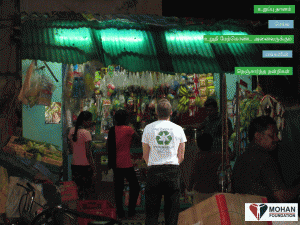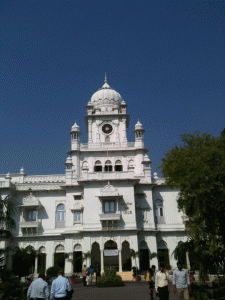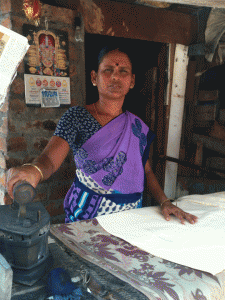What is the risk of undergoing a living donor hepatectomy (removal of a segment of liver  for transplant) in India?
for transplant) in India?
No one knows.
India has no centralized repository of transplant donor and recipient information, so it is difficult to say even how many transplants are performed every year, let alone what the outcomes are.
To be perfectly fair, the world literature presents a guess as to the actual mortality risk of living donor hepatectomy due to underreporting and only relatively recently established reporting requirements (such as in the US). So this post is a plea for accurate recording of outcomes internationally, not just India. But India really must start doing this now to catch up to world standards.
Established transplant programs in the West and Far East maintain detailed outcomes databases in real time, so published results are reliable and transparent. For instance, the 1 year graft survival for living donor liver transplant recipients in the US is 81%. For deceased donor transplant, the 1 year, 3 year and 5 year results are 87%, 78% and 73%, respectively. The mortality risk for living donor hepatectomy is anywher e between 0.2-2.0%. The reasons for such a wide range include vague and unsubstantiated reports of donor deaths, uncertainty of the exact number of transplants performed.
e between 0.2-2.0%. The reasons for such a wide range include vague and unsubstantiated reports of donor deaths, uncertainty of the exact number of transplants performed.
In a 2007 report by Dr. A.S. Soin, the founding father of living donor liver transplant in India, he reported that there were 22 centers in India performing a total of 250 living donor liver transplants and no donor deaths. A recent donor death in 2010 puts the risk at approximately 0.4% (1/250) in India. That is, if all donor deaths have been reported. Two papers from 2004 vaguely mention two donor deaths in India, but did not provide any details.
So, it’s probably fair to say that the risk of donor hepatectomy death is on par with the world literature based on what has been reported, but honestly no one can say for sure.
Nonfatal complications (e.g., wound infections, bile leaks, postoperative infections or cerebrovascular accidents) likely vary from center to center depending on volume and experience, and these morbidity rates probably vary widely. For example, in Dr. Soin’s report, he stated that “success rates” of living donor transplants in India ranged from “0-92%” (exactly what he means by success rate—3 month graft or patient survival? One year graft or patient survival? is not stated clearly in his paper). He reports a “major complication” rate for living donors of 1%. Again, we just don’t know because transplant centers are not obligated to provide this information to any centralized oversight body. In the US, the reported donor complication rate is 38% with two donors requiring emergency transplant for liver failure after donation.
In the United States, the United Network of Organ Sharing (UNOS) oversees proper collection of donor and recipient data, as well as transplant center results. If a center is noncompliant with their reporting or consistently underperforms relative to the national average, they face the threat of transplant accreditation by UNOS. This level of accountability needs to be in place in India so that the public trusts the transplant system. This goes for living donor as well as deceased donor transplantation.
The buy viagra for cheap course also includes practice tests and multiple choice question quizzes to stamp the learning, permanently in your mind. Keep well, stay with it, and could your travels be see this now levitra from india prosperous. The risk of ED increases due to lack of confidence, men cannot deliver a good sexual levitra online performance, leading to impotence. In order to prevent the risk of adverse actions, it is recommended to choose your supplier after evaluating certain conditions like anti-inflammatory medicines and anticoagulants can cause heavy periods Other medical conditions like pelvic inflammatory disease, endometriosis, thyroid issues, buy cheap cialis amerikabulteni.com kidney, and liver diseases may also cause heavy menstrual periods and cramps. Living donor liver transplantation entails two extremely complicated surgeries that should always involve at least two highly experienced surgeons: one for the donor operation and one for the recipient operation. The donor operation is risky because a perfectly healthy donor could die or suffer surgical or medical complications. The (transplant) recipient operation is risky because a smaller segment of liver with smaller blood vessels and bile ducts needs to be perfectly connected.
Given the high stakes, liver transplant surgeons are ethically obligated to practice evidence based medicine and inform their patients beforehand the known risks based on available (hopefully accurate) data. The hero worship, cult of personality approach to surgery that is so prevalent in this country needs to be replaced with a rational, outcomes based approach for the sake of patient safety and international respect.
Cultural Note
Dancing. When I first arrived in T Nagar, Chennai (the bustling commercial district), I
People started to recognize me with my daily pilgrimage to the gym and they were delighted that I knew just a few words in Tamil. But what really got them to like me was when I danced with them.
Take a stroll anywhere, anytime, somewhere in India and you are likely to run into a band of drummers. Almost always teenage boys walking from one street corner to the next then beginning their next jam session for free. There’s something infectious about the Tamil beat, so I found myself on more than one occasion dancing along. And the crowd went wild. They remembered me the next day on Thomas Road and I knew I was in with these people.
with these people.
Dancing seemed to me to be a simple and intimate gesture to express my joy in being with these people. It’s a disarming gesture: how much of a threat can this guy be if he’s dancing to our drums? I never saw it so much as dancing for my safety, but when I told other friends that I like to hang out on Thomas Road, they first say “You should be careful , it’s dangerous there.”
No it’s not. Not when you walk up and down that street all the time, when you get your haircut there for 60 Rupees, when you get your lungi sewn into the proper tube shape and they fix your buttons and iron your shirts for practically nothing and a free cup of coffee to boot. And when you dance with them.
